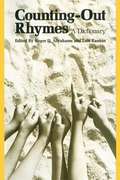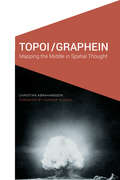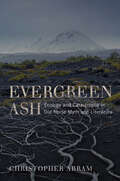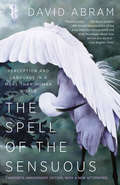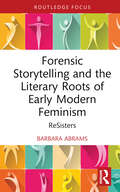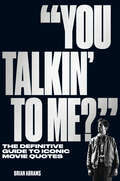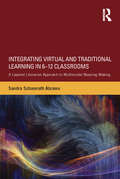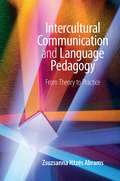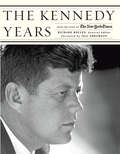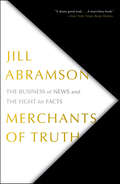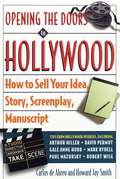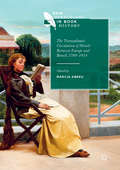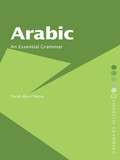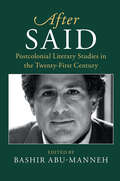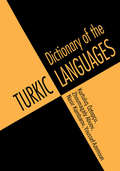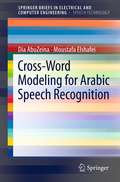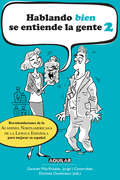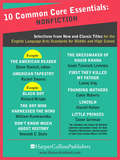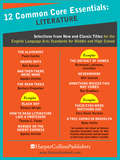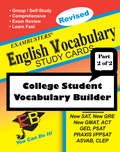- Table View
- List View
Counting-Out Rhymes: A Dictionary
by Roger D. Abrahams Lois RankinEeny, meeny, figgledy, fig. Delia, dolia, dominig,Ozy, pozy doma-nozy,Tee, tau, tut,Uggeldy, buggedy, boo!Out goes you. (no. 129)You can stand,And you can sit,But, if you play,You must be it. (no. 577)Counting-out rhymes are used by children between the ages of six and eleven as a special way of choosing it and beginning play. They may be short and simple ("O-U-T spells out/And out goes you") or relatively long and complicated; they may be composed of ordinary words, arrant nonsense, or a mixture of the two. Roger D. Abrahams and Lois Rankin have gathered together a definitive compendium of counting-out rhymes in English reported to 1980. These they discovered in over two hundred sources from the nineteenth and twentieth centuries, including rhymes from England, Scotland, Ireland, Australia, New Zealand, and the United States. Representative texts are given for 582 separate rhymes, with a comprehensive listing of sources and variants for each one, as well as information on each rhyme's provenience, date, and use. Cross-references are provided for variants whose first lines differ from those of the representative texts. Abrahams's introduction discusses the significance of counting-out rhymes in children's play. Children's folklore and speech play have attracted increasing attention in recent years. Counting-Out Rhymes will be a valuable resource for researchers in this field.
Harcourt School Publishers Collections: Journeys of Wonder
by Richard F. Abrahamson Alma Flor Ada Bernice E. Cullinan Margaret Mckeown Judy Wallis Junko Yokota Hallie Kay Yopp Nancy Roser Patricia SmithIn Journeys of Wonder, the stories, poems, and articles will take you to many exciting places. You will meet many unusual characters and read about interesting facts. Some stories might even make you laugh out loud. You can learn something new on every reading journey. As you read this book, you will learn to be a better reader.
Topoi/Graphein: Mapping the Middle in Spatial Thought (Cultural Geographies + Rewriting the Earth)
by Christian Abrahamsson Gunnar OlssonIn Topoi/Graphein Christian Abrahamsson maps the paradoxical limit of the in-between to reveal that to be human is to know how to live with the difference between the known and the unknown. Using filmic case studies, including Code Inconnu, Lord of the Flies, and Apocalypse Now, and focusing on key concerns developed in the works of the philosophers Deleuze, Olsson, and Wittgenstein, Abrahamsson starts within the notion of fixed spatiality, in which human thought and action are anchored in the given of identity. He then moves through a social world in which spatiotemporal transformations are neither fixed nor taken for granted. Finally he edges into the pure temporality that lies beyond the maps of fixed points and social relations. Each chapter is organized into two subjects: topoi, or excerpts from the films, and graphein, the author’s interpretation of presented theories to mirror the displacements, transpositions, juxtapositions, fluctuations, and transformations between delimited categories. A landmark work in the study of human geography, Abrahamsson’s book proposes that academic and intellectual attention should focus on the spatialization between meaning and its materialization in everyday life.
Evergreen Ash: Ecology and Catastrophe in Old Norse Myth and Literature (Under the Sign of Nature)
by Christopher AbramNorse mythology is obsessed with the idea of an onrushing and unstoppable apocalypse: Ragnarok, when the whole of creation will perish in fire, smoke, and darkness and the earth will no longer support the life it once nurtured. Most of the Old Norse texts that preserve the myths of Ragnarok originated in Iceland, a nation whose volcanic activity places it perpetually on the brink of a world-changing environmental catastrophe. As the first full-length ecocritical study of Old Norse myth and literature, Evergreen Ash argues that Ragnarok is primarily a story of ecological collapse that reflects the anxieties of early Icelanders who were trying to make a home in a profoundly strange, marginal, and at times hostile environment.Christopher Abram here contends that Ragnarok offers an uncanny foreshadowing of our current global ecological crisis—the era of the Anthropocene. Ragnarok portends what may happen when a civilization believes that nature can be mastered and treated only as a resource to be exploited for human ends. The enduring power of the Ragnarok myth, and its relevance to life in the era of climate change, lies in its terrifying evocation of a world in which nothing is what it was before, a world that is no longer home to us—and, thus, a world with no future. Climate change may well be our Ragnarok.
The Spell of the Sensuous: Perception and Language in a More-than-Human World
by David AbramAnimal tracks, word magic, the speech of stones, the power of letters, and the taste of the wind all figure prominently in this intellectual tour de force that returns us to our senses and to the sensuous terrain that sustains us. This is a major work of ecological philosophy that startles the senses out of habitual ways of perception.
Forensic Storytelling and the Literary Roots of Early Modern Feminism: ReSisters (Routledge Focus on Literature)
by Barbara AbramsThe writing of letters and the rise of the novel provided a way for some women to express themselves at a time when the all-male French Academy defined the very parameters of French literary acceptability and tradition. Women who were consigned to convents, workhouses or prisons were in most respects deprived of agency, yet many found ways to respond to the legal documents served against them. The letters and associated materials preserved in their legal files provide evidence that these women did not remain quiet, as they found means to resist authority. The forensic storytelling examined in this book supports the conclusion that the documents written in these constrained circumstances have both historical and literary merit and form the core of an understudied genre of literature.
"You Talkin' to Me?": The Definitive Guide to Iconic Movie Quotes
by Brian AbramsThis deep dive into hundreds of Hollywood&’s most iconic and beloved lines is a must-have for every film buff."You Talkin&’ to Me?" is a fun, fascinating, and exhaustively reported look at all the iconic Hollywood movie quotes we know and love, from Casablanca to Dirty Harry and The Godfather to Mean Girls. Drawing on interviews, archival sleuthing, and behind-the-scenes details, the book examines the origins and deeper meanings of hundreds of film lines: how they&’ve impacted, shaped, and reverberated through the culture, defined eras in Hollywood, and become cemented in the modern lexicon. Packed with film stills, sidebars, lists, and other fun detours throughout movie history, the book covers all genres and a diverse range of directors, writers, and audiences.
The Mirror and the Lamp: Romantic Theory and the Critical Tradition
by M. H. AbramsThis highly acclaimed study analyzes the various trends in English criticism during the first four decades of this century.
A Glossary of Literary Terms
by M. H. Abrams Geoffrey Galt HarphamThis book defines and discusses terms, critical theories, and points of view that are commonly applied in classifying, analyzing, interpreting, and writing the history of works of literature. The component entries, together with the guides to further reading included in most of them, are oriented especially toward undergraduate students of English, American, and other literatures. Over the decades, however, the book has proved to be a useful and popular work of reference for advanced students, as well as for the general reader with literary interests.
Integrating Virtual and Traditional Learning in 6-12 Classrooms: A Layered Literacies Approach to Multimodal Meaning Making
by Sandra Schamroth AbramsIntegrating Virtual and Traditional Learning in 6-12 Classrooms introduces a model of "layered literacies" as a framework for describing and illustrating how students’ digital experiences can inform educational methods. Through the lens of layered literacies, educators can envision opportunities to draw upon adolescents’ out-of-school interests and activities to meaningfully integrate digital practices within academic contexts. Such an approach facilitates innovative teaching, inspired learning, and successful pedagogy, and it thoughtfully highlights the role of technology within mandated standards-based instruction in public schools. Combining foundational and contemporary theories, supported by data from multiple studies of adolescent learning, and honoring teachers’ and students’ experiences and resources, this text helps educators reconceptualize the ways students learn through and with digital texts and negotiate the connection between online and offline spaces. A companion website extends the discussion onto the screen, engaging readers in an intertextual approach to learning that complements the concept of layering literacies across disciplines. With a foreword by Jennifer Rowsell and an afterword by Bill Cope and Mary Kalantzis, it will be of interest to experienced educators and administrators, as well as postgraduate, graduate, and undergraduate students of education.
Intercultural Communication and Language Pedagogy: From Theory To Practice
by Zsuzsanna I. AbramsLearning a new language offers a unique opportunity to discover other cultures as well as one's own. This discovery process is essential for developing 21st-century intercultural communication skills. To help prepare language teachers for their role as guides during this process, this book uses interdisciplinary research from social sciences and applied linguistics on intercultural communication for designing teaching activities that are readily implemented in the language classroom. Diverse language examples are used throughout the book to illustrate theoretical concepts, making them accessible to language teachers at all skill levels. The chapters introduce various perspectives on culture, intercultural communicative competence, analyzing authentic language data, teaching foreign/second languages with an intercultural communication orientation, the intercultural journey, the language-culture-identity connection, as well as resolving miscommunication and cultural conflict. While the immediate audience of this book is language teachers, the ultimate beneficiaries are language learners interested in undertaking the intercultural journey.
The Kennedy Years: From the Pages of The New York Times
by Jill Abramson“A deeply illuminating, journalistic romp through Camelot from the eyes and minds of the great New York Times reporters of that era and beyond.” —Douglas Brinkley, #1 New York Times–bestselling authorDecades after the assassination of John F. Kennedy, he still ranks as one of the top five presidents in every major annual survey. To commemorate the man and his time in office, the New York Times has authorized a book, edited by Richard Reeves, based on its unsurpassed coverage of the tumultuous Kennedy era. The Civil Rights Movement, the Bay of Pigs, the Cuban Missile Crisis, Vietnam, the space program, the Berlin Wall—all are covered in articles by the era’s top reporters, among them David Halberstam, Russell Baker, and James Reston. Also included are new essays by leading historians such as Robert Dallek and Terry Golway, and by Times journalists, including Sam Tanenhaus, Scott Shane, Alessandra Stanley, and Roger Cohen. With more than 125 color and black-and-white photos, this is the ultimate volume on one of history’s most fascinating figures.“This book is both fascinating and poignant. It brings us back into the Kennedy years while also allowing us to reflect on what made them so emotional. I found myself totally immersed.” —Walter Isaacson, #1 New York Times–bestselling author“Provides much more than a riveting first draft of history. Here we also witness the birth of modern America.” —Cokie Roberts, former political commentator and #1 New York Times–bestselling author “A terrific introduction to the Kennedy presidency for those who did not live through it, and a startling reminder for those who did of how much happened in those 1,000 days.” —David Nasaw, New York Times–bestselling author
Merchants of Truth: The Business of News and the Fight for Facts
by Jill AbramsonFormer executive editor of The New York Times and one of our most eminent journalists Jill Abramson provides a &“valuable and insightful&” (The Boston Globe) report on the disruption of the news media over the last decade, as shown via two legacy (The New York Times and The Washington Post) and two upstart (BuzzFeed and VICE) companies as they plow through a revolution that pits old vs. new media.&“A marvelous book&” (TheNew York Times Book Review), Merchants of Truth is the groundbreaking and gripping story of the precarious state of the news business.The new digital reality nearly kills two venerable newspapers with an aging readership while creating two media behemoths with a ballooning and fickle audience of millennials. &“Abramson provides this deeply reported insider account of an industry fighting for survival. With a keen eye for detail and a willingness to interrogate her own profession, Abramson takes readers into the newsrooms and boardrooms of the legacy newspapers and the digital upstarts that seek to challenge their dominance&” (Vanity Fair). We get to know the defenders of the legacy presses as well as the outsized characters who are creating the new speed-driven media competitors. The players include Jeff Bezos and Marty Baron (TheWashington Post), Arthur Sulzberger and Dean Baquet (TheNew York Times), Jonah Peretti (BuzzFeed), and Shane Smith (VICE) as well as their reporters and anxious readers.Merchants of Truth raises crucial questions that concern the well-being of our society. We are facing a crisis in trust that threatens the free press. &“One of the best takes yet on journalism&’s changing fortunes&” (Publishers Weekly, starred review), Abramson&’s book points us to the future.
Opening the Doors to Hollywood: How to Sell Your Idea Story, Book, Screenplay, Manuscript
by Carlos De Abreu Howard Jay SmithFinally! A step-by-step guide to the keys that unlock the doors to Hollywood.Opening the Doors to Hollywood has all the information you'll ever need in order to tap into the $500 million spent yearly in Hollywood on acquiring and developing projects.Discover how to:Find a storyRewrite itOption itPackage itPitch itWrite itSell it to film and television companiesComplete with a reference section that includes guilds/unions, libraries, sample contracts, seminars and workshops, trade publications, and writers' organizations, Opening the Doors to Hollywood is invaluable to any writer.From the Trade Paperback edition.
The Transatlantic Circulation of Novels Between Europe and Brazil, 1789-1914
by Márcia AbreuThis book brings a renewed critical focus to the history of novel writing, publishing, selling and reading, expanding its viewing beyond national territories. Relying on primary sources (such as advertisements, censorship reviews, publisher and bookstore catalogues), the book examines the paths taken by novels in their shifts between Europe and Brazil, investigates the flow of translations in both directions, pays attention to the successful novels of the time and analyses the critical response to fiction in both sides of the Atlantic. It reveals that neither nineteenth century culture can be properly understood by focusing on a single territory, nor literature can be fully perceived by looking only to the texts, ignoring their material existence and their place in social and economical practices.
John Ruskin: The Passionate Moralist
by Joan AbseJoan Abse treats Ruskin with deep and proper respect from start to finish; and she writes best of all on his ideas about art and artists.
Arabic: An Essential Grammar
by Faruk Abu-ChacraArabic: An Essential Grammar is an up-to-date and practical reference guide to the most important aspects of the language. Suitable for beginners, as well as intermediate students, this book offers a strong foundation for learning the fundamental grammar and structure of Arabic. The complexities of the language are set out in short, readable sections, and exercises and examples are provided throughout. The book is ideal for independent learners as well as for classroom study. Features of this book include: coverage of the Arabic script and alphabet a chapter on Arabic handwriting a guide to pronunciation full examples throughout.
After Said: Postcolonial Literary Studies in the Twenty-First Century (After Series)
by Bashir Abu-MannehBy the time of his death in 2003, Edward Said was one of the most famous literary critics of the twentieth century. Said's work has been hugely influential far beyond academia. As a prominent advocate for the Palestinian cause and noted cultural critic, Said redefined the role of the public intellectual. This volume explores the problems and opportunities afforded by Said's work: its productive and generative capacities as well as its in-built limitations. After Said captures the essence of Said's intellectual and political contribution and his extensive impact on postcolonial studies. It examines his legacy by critically elaborating his core concepts and arguments. Among the issues it tackles are humanism, Orientalism, culture and imperialism, exile and the contrapuntal, realism and postcolonial modernism, world literature, Islamophobia, and capitalism and the political economy of empire. It is an excellent resource for students, graduates and instructors studying postcolonial literary theory and the works of Said.
The Palestinian Novel
by Abu-Manneh BashirWhat happens to the Palestinian novel after the national dispossession of the nakba, and how do Palestinian novelists respond to this massive crisis? This is the first study in English to chart the development of the Palestinian novel in exile and under occupation from 1948 onwards. By reading the novel in the context of the ebb and flow of Arab and Palestinian revolution, Bashir Abu-Manneh defines the links between aesthetics and politics. Combining historical analysis with textual readings of key novels by Jabra, Kanafani, Habiby, and Khalifeh, the chronicle of the Palestinian novel unfolds as one that articulates humanism, self-sacrifice as collective redemption, mutuality, and self-realization. Political challenge, hope, and possibility are followed by the decay of collective and individual agency. Genet's and Khoury's unrivalled literary homages to Palestinian revolt are also examined. By critically engaging with Lukács, Adorno, and postcolonial theory, questions of struggle and self-determination take centre stage.
Dictionary of Turkic Languages
by Zhoumagaly Abuov Nasir Kambarov Youssef AzemounThis multi-language dictionary covers the eight major Turkic languages: Turkish, Azerbaijani, Turkmen, Uzbek, Uighur, Kazakh, Kirgiz, and Tatar. 2000 headwords in English are translated into each of the eight Turkic languages. Words are organized both alphabetically and topically. Original script and Latin transliteration are provided for each language. For ease of use, alphabetical indices are also given for the eight languages. This is an invaluable reference book for both students and learners and for those enaged in international commerce, research, diplomacy and academic and cultural exchange.
Cross-Word Modeling for Arabic Speech Recognition (SpringerBriefs in Speech Technology)
by Dia Abuzeina Moustafa ElshafeiCross-Word Modeling for Arabic Speech Recognition utilizes phonological rules in order to model the cross-word problem, a merging of adjacent words in speech caused by continuous speech, to enhance the performance of continuous speech recognition systems. The author aims to provide an understanding of the cross-word problem and how it can be avoided, specifically focusing on Arabic phonology using an HHM-based classifier.
Hablando bien se entiende la gente 2
by Academia Norteamericana de la Lengua EspañolaRecomendaciones de la Academia Norteamericana de la Lengua Española para mejorar su español En el anuncio de una sastrería se leía: "Se alteran pantalones". ¿Cómo? ¿Pantalones enojados? Sin duda el anuncio quería decir que se arreglaban pantalones. Aunque el adjetivo alterado significa también cambio "Lo encontré muy alterado; seguramente le habrían dado una mala noticia", en este caso de la sastrería el término más preciso es arreglar. Cuando vives en los Estados Unidos, hablar español correctamente se vuelve una "Misión casi imposible". Cada día usamos más traducciones erróneas para comunicarnos; como es el caso, por ejemplo, del uso de "carpeta", del inglés carpet, para referirnos a la alfombra, o "parquear", del inglés parking, cuando lo que realmente queremos decir es estacionar. En Hablando bien se entiende la gente 2, la Academia Norteamericana de la Lengua Española reanuda la divertida aventura que inició en el 2009. En esta continuación del exitoso Hablando bien se entiende la gente, encontrarás los términos correctos para cientos de palabras así como las respuestas a algunas de las preguntas que nos hacemos más frecuentemente sobre el uso del idioma. Por ejemplo, "¿Se los dije? o ¿se lo dije?". Mmm... muy buena pregunta...
10 Common Core Essentials: Selections from New and Classic Books for the English Language Arts Standards for Middle and High School
by Harper AcademicThe excerpts featured in this free sampler come from some of our most popular nonfiction books for middle and high school classrooms—making them ideal choices to meet the new Common Core Standards for the English Language Arts. From the primary documents of The American Reader to The Boy Who Harnessed the Wind—the story of young man from an impoverished African village who built a windmill to bring life-changing electricity to his community—these books will take students across time periods and around the world. They'll grapple with complex ideas and meet people from the past and present who will inspire them. Along the way, your students will come to understand the components of critical thinking and good writing—and why they matter.
12 Common Core Essentials: Selections from New and Classic Books for the English Language Arts Standards for Middle and High School
by Harper AcademicAs you reevaluate the books you use in your classroom to meet the Common Core Standards, this free collection--filled with selections from classics such as Zora Neale Hurston's Their Eyes Were Watching God, contemporary novels like The Alchemist by Paulo Coelho, and the AP English favorite How to Read Literature Like a Professor by Thomas C. Foster--will help you decide which books are right for you and your students.
Exambusters English Vocabulary Study Cards: College (Exambusters Vocabulary #2)
by Ace AcademicsEXAMBUSTERS College Student English Vocabulary Builder Parts 1 and 2 eBook flash cards: Over 350 words every well-educated person should know. While you may not hear them every day, they can show up on standardized exams, and understanding them will boost your score. Includes sample sentence, part of speech, pronunciation, succinct, easy-to-remember definition, and common synonyms and antonyms. Compiled by certified teachers and college professors with a focus on exam preparation. Highlights the essentials to test well. Prepare for quizzes, tests, New SAT, PRAXIS I, GED, GRE, PSAT, GMAT, ACT . . . . A COURSE in an eBook! ======================================== Ace Academics "Exambusters Study Cards" for test prep are tailored to fourteen different standardized tests (for example: SAT, GED, GRE, MCAT, PRAXIS) The flash card format is available in printed cards, CD-Rom software and eBooks.
